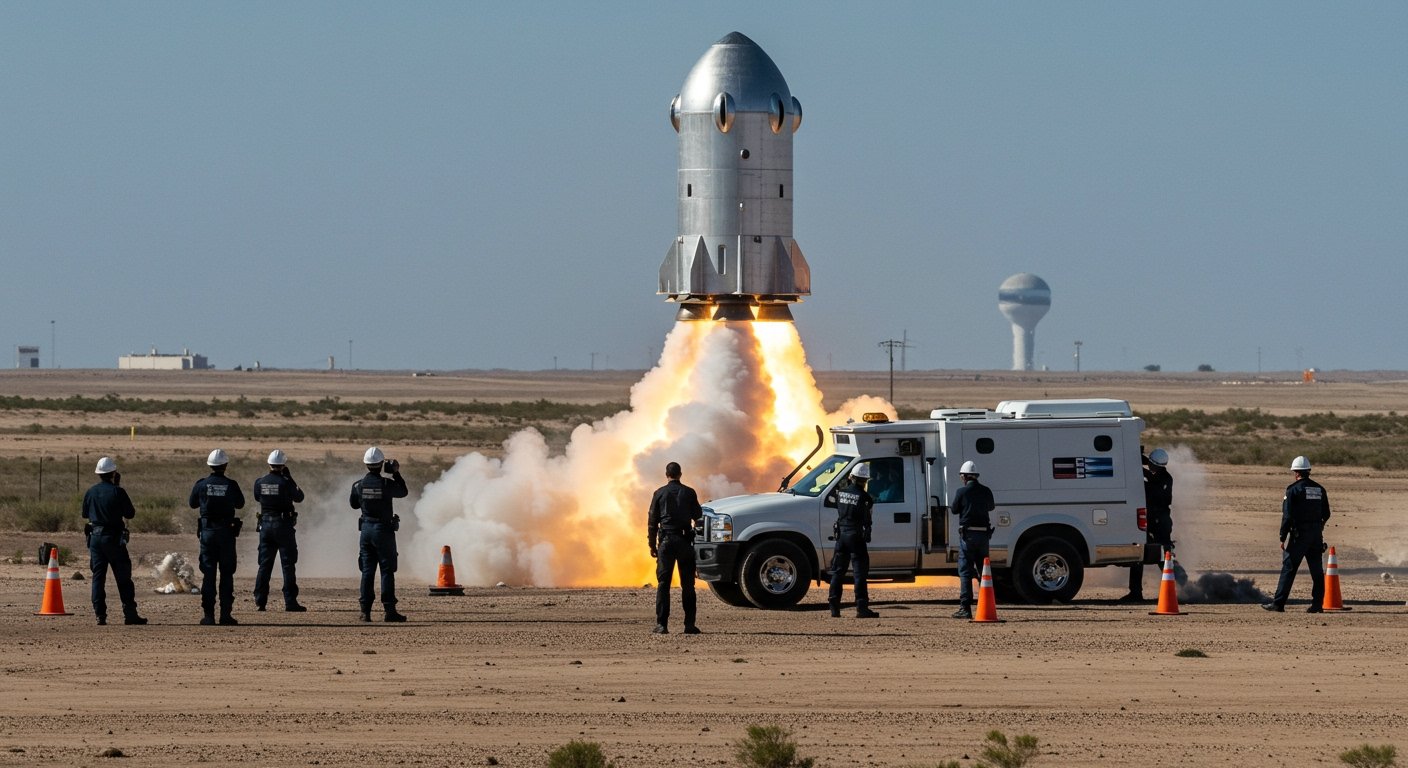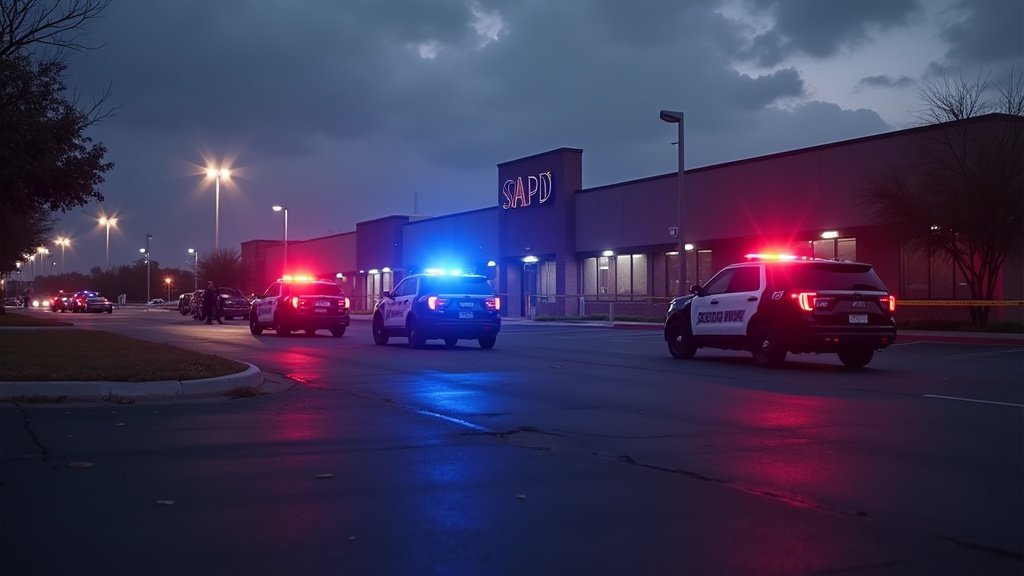SpaceX Starship Test Explodes in Texas, Marking Setback for Mars Rocket Program
STARBASE, Texas – A prototype of SpaceX’s towering Starship rocket, the vehicle central to the company’s ambitions for sending humans to Mars, exploded late Wednesday during a ground test at its South Texas facility. The incident, which occurred around 11 p.m. Central Time (0400 GMT Thursday), resulted in the complete loss of the vehicle and caused damage to the immediate surrounding area.
The explosion took place at SpaceX’s Starbase development site, located near Boca Chica, Texas, as the upper stage prototype, reportedly identified in some communications as Ship 36, was undergoing a routine ground test while positioned on a test stand. Witnesses reported seeing a towering fireball light up the night sky following the “major anomaly.”
Investigation Underway After Test Failure
SpaceX founder Elon Musk addressed the incident shortly after it occurred, attributing the explosion to a potential failure. According to Musk, the preliminary assessment points to a composite overwrapped pressure vessel (COPV) in the nosecone area of the Starship upper stage. COPVs are lightweight vessels used to store fluids or gases under high pressure; in this case, the vessel contained gaseous nitrogen. Failures in such components can be sudden and catastrophic.
Despite the dramatic nature of the event and the visible destruction, SpaceX confirmed that critical safety protocols were effectively implemented. The company stated that a safety clear area around the test stand was maintained as planned. All personnel associated with the Starbase operations were confirmed safe and accounted for, with no reported injuries resulting from the explosion. Local officials are working closely with the Starbase team to secure and safe the test site following the anomaly.
Context of the Starship Program and Iterative Testing
This incident represents another setback in the ambitious development program for Starship. The Starship vehicle is designed to be a fully reusable, two-stage super heavy-lift launch system, standing an imposing 403 feet (123 meters) tall when stacked on its Super Heavy booster. Its ultimate purpose is to significantly reduce the cost of spaceflight and enable long-duration missions, including the establishment of a permanent base on the moon and eventually transporting humans to Mars.
The upper stage, Ship 36, was reportedly being prepared for its tenth flight test. The Starship program has adopted an iterative development approach, characterized by rapid prototyping, testing, and learning from failures. While this methodology is intended to accelerate development, it also inherently involves a higher frequency of test anomalies compared to more traditional aerospace development programs.
Previous tests have included static fire tests, hop tests, high-altitude flight tests with intentional controlled descents, and orbital flight attempts. These tests have sometimes ended in explosions or other failures, providing engineers with crucial data to refine the design and operational procedures. Each test, successful or otherwise, is seen by SpaceX as a critical step forward in validating the complex systems required for orbital and interplanetary flight.
Elon Musk’s Reaction and Program Outlook
Following the explosion, Elon Musk offered a notably understated assessment via a post on the social media platform X. He characterized the incident simply as “Just a scratch,” a phrase that reflects his often unconventional and resilient public stance regarding development challenges and setbacks within his companies.
While Musk’s comment suggests a perspective where such failures are viewed as part of the process rather than insurmountable obstacles, the complete loss of a test article and damage to infrastructure undeniably impact the program’s immediate schedule. Developing a rocket of Starship’s size and capability, particularly one designed for full reusability and deep space missions, is an undertaking fraught with significant technical hurdles.
The incident underscores the complexities inherent in pushing the boundaries of rocket engineering. Engineers will now analyze the extensive data collected during the test and the anomaly to understand precisely why the COPV failed and implement corrective actions. This root cause analysis is a standard and crucial step in the iterative development cycle, informing modifications to future prototypes and testing procedures.
Path Forward for Starship
Despite the setback, the Starship program is expected to continue its aggressive testing schedule. The Starbase facility is designed to simultaneously work on multiple Starship and Super Heavy booster prototypes, allowing for parallel development and testing streams. The ability to rapidly manufacture new vehicles is a cornerstone of SpaceX’s approach to offsetting the impact of test failures.
The program’s progress is closely watched by the global space industry, potential customers – including NASA, which selected Starship as the lunar lander for its Artemis program – and governments interested in its potential applications for satellite deployment and point-to-point Earth transport. The successful development of Starship is considered by many to be a critical enabler for future large-scale space endeavors.
While the explosion of Ship 36 marks another challenge, it is likely to be followed by subsequent tests as SpaceX pushes towards its goal of developing a reliable system capable of fulfilling its ambitious mission objectives, including reaching the surface of Mars.






